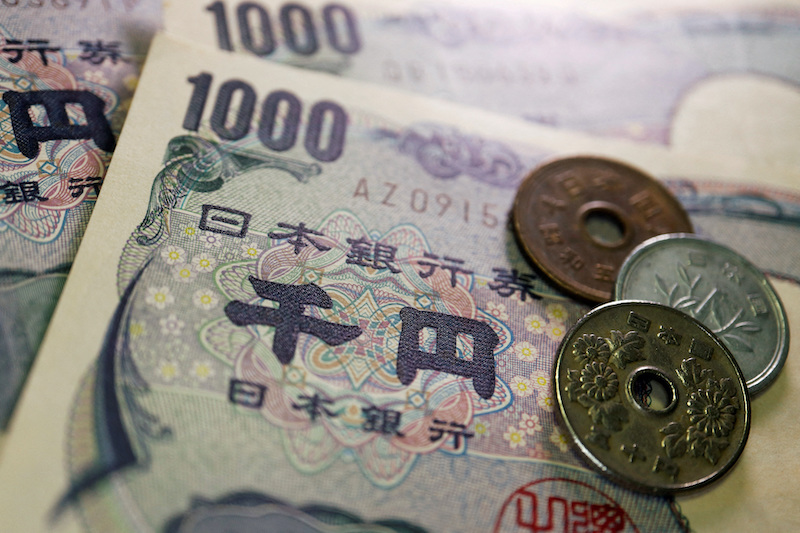The Japanese yen fell below the key 145 mark per dollar on Monday, for the first time in more than a week after Tokyo spent close to $20 billion propping up the currency.
However, trading in Asia was reduced by holidays in china, South Korea and some Australian states.
But the big news in currency markets was the rise of sterling, after British finance minister Kwasi Kwarteng said the government would reverse a plan to scrap the UK’s highest rate of income tax.
The British pound touched a one-week high $1.128 and was last up 0.27% to $1.11955, surging nearly 1% after the BBC first reported the news of the reversal.
Kwarteng later said in a statement on Twitter that the government is “not proceeding with the abolition of the 45p tax rate”.
“We get it, and we have listened,” Kwarteng said regarding the policy reversal.
His plans unleashed financial chaos last week, which saw sterling hit an all-time low of $1.0327 and sent gilts spiralling, prompting the Bank of England to step in.
ALSO SEE:
Factory Activity Slows All Across Asia in September
Suzuki Ready for ‘Decisive’ Steps
In Asia, the yen was last seen 0.2% lower at 145.10. Monday’s fall came after Finance Minister Shunichi Suzuki said Japan stood ready for “decisive” steps in the foreign exchange market if excessive yen moves persisted.
September 22 was the last time the currency weakened below 145 to the dollar, after the Bank of Japan stuck with ultra-low interest rates, which prompted a record expenditure of 2.8 trillion yen ($19.7 billion) by authorities to prop up the yen.
“Each time (dollar/yen) gets to 145, it gets people excited. But it’s the magnitude of the move that sometimes matters,” Christopher Wong, a currency strategist at OCBC, said.
“That said, we remain watchful and won’t rule out stealth yen intervention if the magnitude of the yen’s decline increases again, perhaps when it breaches 146, using current levels as reference.”
Most Asian Currencies Down
Most emerging Asian currencies were weighed down on Monday, with Thailand’s baht leading the laggards in a holiday-thinned trade, as worries over searing inflation pressures and recession continued to dominate the market.
The Thai baht slumped 0.8% as higher oil prices added pressure on the currency, after the Organisation of Petroleum Exporting Countries said its could cut output by more than a million barrels a day.
“It could be some commodities-related flows again that could contribute to the unit’s depreciation today,” Poon Panichpibool, a markets strategist at Krung Thai Bank, said.
“Some market players could buy commodities like crude oil and these commodities-buying flows are usually done in dollar terms so market players have to buy the greenback and sell the baht.”
Moreover, the Malaysian ringgit dipped 0.1% in its eighth consecutive session of losses and hit its lowest level since 1998. The country’s central bank chief, meanwhile, said that the weakening of the currency was not a reflection of the state of the economy.
The ringgit has lost about 12% against the dollar so far this year.
Other units such as the Philippines peso and the Taiwan dollar fell about 0.4% each.
Jakarta Issues Warning
In Indonesia, financial services firms were ordered to intensively analyse various scenarios in which US dollar exposure and high energy prices could impact their performance, the sector regulator said on Monday.
Financial Services Authority (OJK) deputy chair Mirza Adityaswara said at a news conference that firms have to closely monitor their exposures through bonds and foreign exchanges.
“We also asked the firms to pay attention to loan risks in sectors that consume high energy…and those firms whose performance is closely linked to the cycle of commodity prices,” he said. “Debtors who don’t have revenues in dollars, should be careful.”
The measure follows a recent government order for state-owned enterprises to reduce US dollar exposure by diversifying their sources of funds to currencies other than US dollar.
The rupiah weakened 0.5% by 0736 GMT on Monday to 15,300 per dollar. Earlier in the session, it hit 15,305 per dollar, its weakest since April 2020.
The fall came after Southeast Asia’s largest economy reported a rise in inflation to 5.95%, although it was slightly less than expected.
“Rising inflation will likely convince Bank Indonesia to stay hawkish with more rate hikes likely at the October 20 meeting,” analysts at ING wrote.
BI has raised interest rates twice by a total of 75 basis points since August to rein in domestic inflation and support the rupiah.
Aussie, Kiwi Gain
The Australian and New Zealand dollars, meanwhile, gained ground ahead of expected rate hikes by their central banks during the week.
The Aussie was up 0.5% to $0.6443, while the kiwi was 0.92% higher at $0.5655.
The Reserve Bank of Australia and the Reserve Bank of New Zealand meet on Tuesday and Wednesday, respectively, with markets expecting both to lift their cash rate by 50 basis points, though the focus will also be on the tone of policymakers.
“The RBA could be quite influential if they give a more nuanced approach and signal that they may come down to 25 basis points in the November meeting. That might be taken, globally, quite well,” Chris Weston, head of research at Pepperstone, said.
The euro was marginally lower at $0.97965, with expectations for another jumbo European Central Bank rate hike this month, following a red-hot inflation read-out, heightening worries that the economy would be tipped into a recession.
Data on Friday showed that euro zone inflation zoomed past forecasts to a record high of 10.0% in September, beating expectations of 9.7%.
“The ECB is still going to have to go hard … for me, with Europe and the UK, it’s less about relative interest rate dynamics, and more about growth dynamics,” Weston said.
“I think what we’re starting to try and do now is look at markets where we can price inflation or start feeling a bit more confident about the trajectory around inflation. I think the US falls into that category.”
US non-farm payrolls are due at the end of the week, while a flood of manufacturing PMI data out later on Monday will also give insight into the outlook for the global economy.
The US dollar index fell 0.05% to 112.19.
- Reuters with additional editing by Jim Pollard
NOTE: Further details were added to this report on Monday October 3, 2022 as the news emerged.
ALSO SEE:
Japan Ready to Back Yen Again, Vows Finance Minister
Taiwan Central Bank Chief Rules Out Foreign Exchange Controls
Why Japan Has Fallen Out of Love With a Weak Yen
























